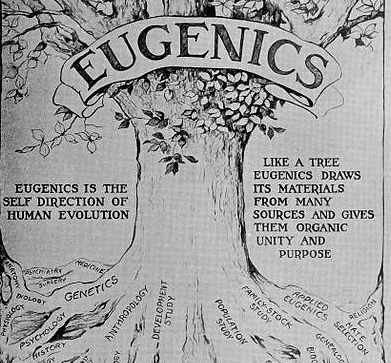Legacies of Eugenics: An Introduction
By Osagie K. Obasogie,
L.A. Review of Books
| 04. 17. 2024
When Robert G. Edwards won the Nobel Prize in Physiology or Medicine in 2010 for developing in vitro fertilization (IVF) decades earlier in 1978, many members of the scientific community sighed in relief. This honor, they felt, was long overdue. A beloved researcher, Edwards was revered for making a profound contribution to humanity. Edwards was 84 years old and suffering from dementia at the time of the announcement, leading some supporters to worry that he might not live long enough to receive the honor. (Nobel Prizes cannot be awarded posthumously, which is why his collaborator, Patrick Steptoe, who died in 1988, did not share this accolade.) Edwards died three years later, in 2013.
Edwards’s creation of the world’s first IVF baby, Louise Brown, in Oldham, England, had been anything but unproblematic. An enormous amount of consternation surrounded the lead-up to and immediate aftermath of this scientific breakthrough. The Vatican was up in arms. Pundits warned of a “brave new world” of babies made in test tubes. Critics declared IVF unethical and “against nature” itself. They thought it would turn...
Related Articles
By Grace Won, KQED [with CGS' Katie Hasson] | 12.02.2025
In the U.S., it’s illegal to edit genes in human embryos with the intention of creating a genetically engineered baby. But according to the Wall Street Journal, Bay Area startups are focused on just that. It wouldn’t be the first...
Several recent Biopolitical Times posts (1, 2, 3, 4) have called attention to the alarmingly rapid commercialization of “designer baby” technologies: polygenic embryo screening (especially its use to purportedly screen for traits like intelligence), in vitro gametogenesis (lab-made eggs and sperm), and heritable genome editing (also termed embryo editing or reproductive gene editing). Those three, together with artificial wombs, have been dubbed the “Gattaca stack” by Brian Armstrong, CEO of the cryptocurrency company...
By Lucy Tu, The Guardian | 11.05.2025
Beth Schafer lay in a hospital bed, bracing for the birth of her son. The first contractions rippled through her body before she felt remotely ready. She knew, with a mother’s pit-of-the-stomach intuition, that her baby was not ready either...
By Emily Glazer, Katherine Long, Amy Dockser Marcus, The Wall Street Journal | 11.08.2025
For months, a small company in San Francisco has been pursuing a secretive project: the birth of a genetically engineered baby.
Backed by OpenAI chief executive Sam Altman and his husband, along with Coinbase co-founder and CEO Brian Armstrong, the startup—called...




